
Rebuilding and upgrading a Ruger 10/22 introduces improvements far beyond the aesthetic benefits.
What Are The Features Of The Ruger 10/22 You Can Upgrade:
Ruger’s auto-loading 10/22 .22 Long Rifle is arguably the most popular firearm in its class. The 10/22 is incredibly reliable, designed to withstand repeated dry fires (something that can damage lesser .22 LR designs) and includes a compact and unfailing 10-round rotary magazine. Plus, William B. Ruger engineered the 10/22 to be affordable and easily maintained.
On top of all that, the 10/22 is also highly customizable. Only the AR-15 has spawned a wider array of aftermarket accessories, though tricking out a 10/22 is typically accomplished more affordably. The basic starting point — a blued-barrel, wood-stocked 10/22 carbine — sets you back about $300, brand-spanking new. Yet, because some 5 million-plus 10/22s have sold since its 1964 introduction, a ready supply of affordable “project guns” appear on the used-gun market.
Find Out More About Ruger Firearms
The 10/22’s modular design and obvious popularity has resulted in a thriving cottage industry creating aftermarket parts and accessories (it’s now possible to build a fully functioning 10/22 completely from non-Ruger parts). At least two manufacturers produce 10/22 clones, including parts interchangeable with factory Ruger's, but they also include a hefty price tags. The gun nut with a modicum of mechanical skills and a factory 10/22 can build their own customized rifle for hundreds of dollars less.
The 10/22 Build
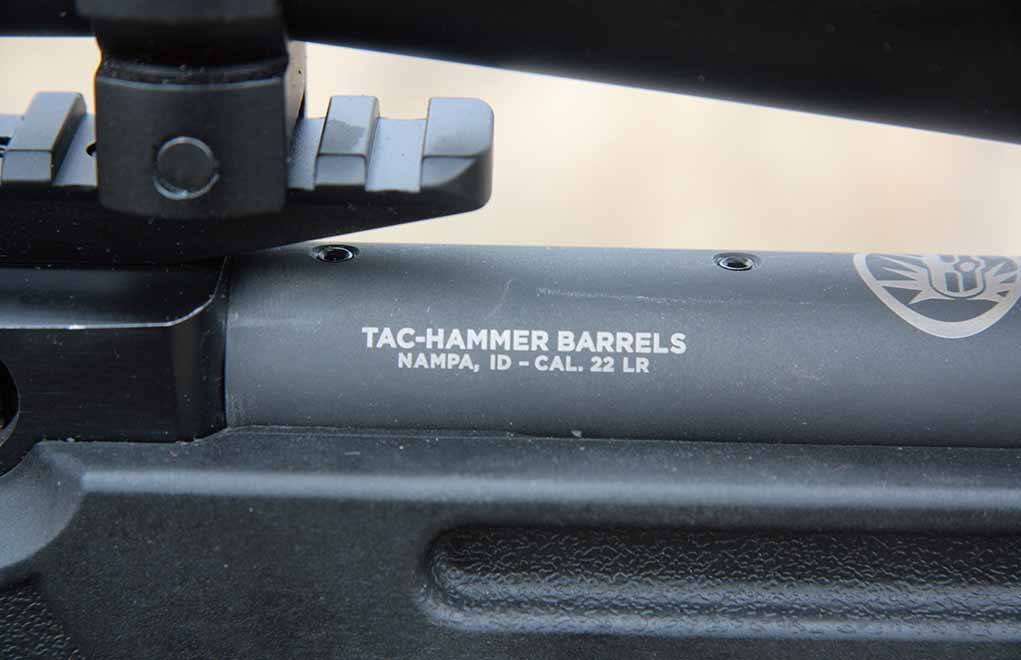
It’s safe to say pure aesthetics drive many 10/22 projects. There’s certainly nothing wrong with wanting a sexy-looking .22 LR, but serious shooters usually approach these builds looking for improved accuracy. This comes from four defined areas:
- A trigger group that provides a smoother, lighter pull than the lawyer-influenced factory assemblies
- A more stable and/or comfortable stock design, which also creates a free-floated tube
- A barrel upgrade
- A centerfire-style recoil lug
Most of these tasks are accomplished with nothing more than a flat-head screwdriver, Allen-wrench set, 1/8-inch punch and the smallest degree of gunsmithing acumen. Choosing from the plethora of appealing 10/22 replacement accessories, well, that can prove more excruciating. Personal tastes, functionality to specific tasks and budget ultimately dictate these decisions. Being a hardcore small-varmint shooter, I built this rifle accordingly.

To sum up the process of this experiment, I took a standard 10/22 and tested it for accuracy. I then upgraded the trigger and tested the accuracy again. And I continued this same process after upgrading the stock, barrel and recoil lug.
Establishing A Baseline From The Original
Six ammunition types were chosen to meet common velocity goals, price-points and terminal needs. Winchester’s Super Suppressed is a subsonic load providing pellet-gun silence when shot through suppressors, propelling 45-grain black-copper-plated round-nose (RN) bullets to 1,090 fps. Federal’s American Eagle 38-grain copper-plated hollow-point (HP) is a budget-priced option, pushing 1,260 fps and anchoring burrowing rodents with authority. Eley Force is a 42-grain RN round designed specifically for semi-autos. A patented black-oxidized case better regulates bullet release for improved accuracy and posts velocities of 1,250 fps.
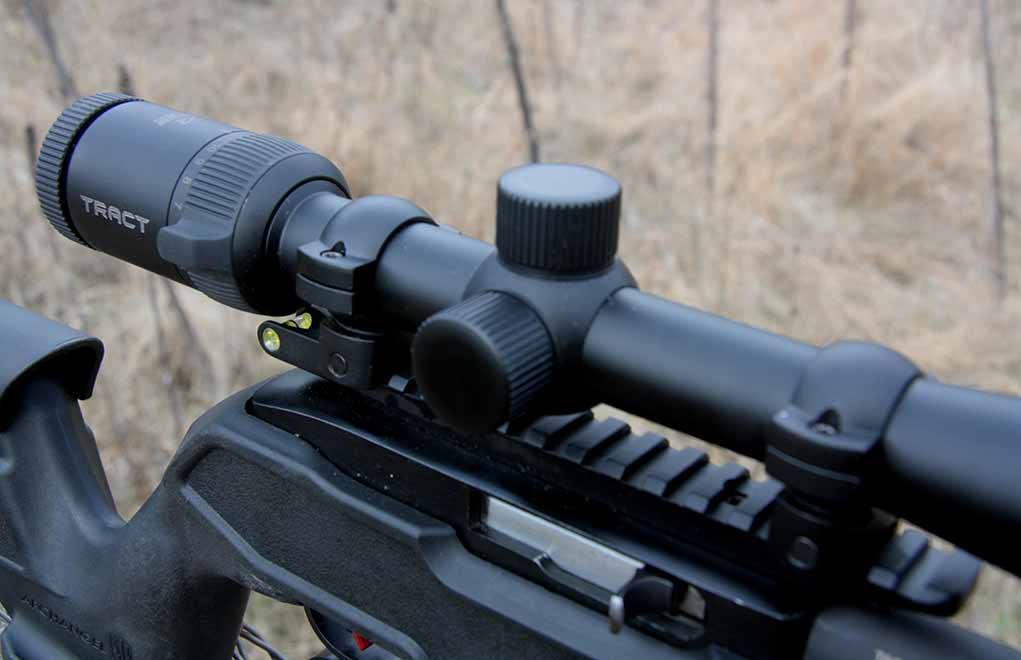
CCI’s Mini-Mag combines 1,235 fps velocity with reliable accuracy. I used the 40-grain copper-plated RN version here. Browning’s BPR (Browning Performance Rimfire) includes a 40-grain copper-plated HP and generates velocities around 1,435 fps, hitting especially hard at extended ranges. Finally, CCI’s blazing-fast Stinger employs an extended case and shorted 32-grain copper-plated HP pushed to 1,640 fps.
More On Rimfires:
- The .22 LR: Mini, Mighty And Many
- Best .22 Suppressor Choices To Mute Your Plinker
- The Quintessential 22 Pistol: The Colt Woodsman
- Collector’s Corner: The Browning SA-22
- The .22 LR For Self Defense: Good, Bad Or Crazy?
The base rifle was a lightly-used and well-maintained Model 1103 carbine — Ruger’s most affordable 10/22 — purchased used. After a thorough cleaning, it fed flawlessly through 625-plus test shots, not especially surprising for this design. During each step of the test — unaltered rifle, replacement trigger, stock, barrel and recoil lug — each ammunition type was subjected to five 5-shot groups at 50 yards, from a portable bench over an MTM Case-Gard Predator Rifle Rest. Scope zero was checked, and often recalibrated, between accessory changes. Groups were carefully measured and recorded, averaged per round, and these figures then averaged for all resulting groups in that test group. A bore snake was pulled through the barrel three times between ammunition types and three fouling shots fired before resuming.
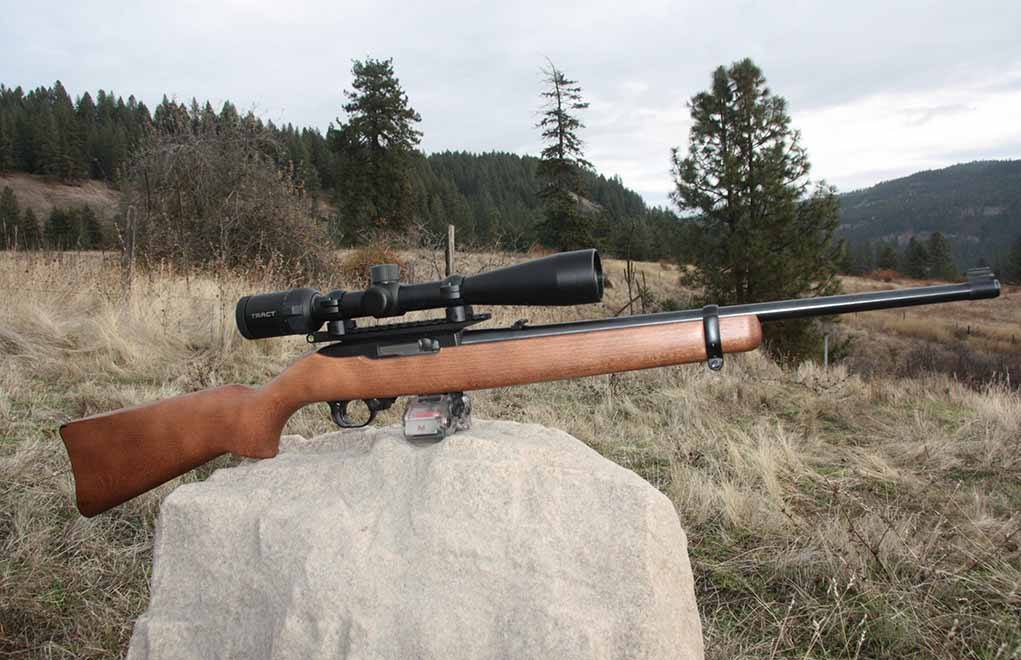
It’s important to understand groups assembled with a single rifle or accessory combination is in no way indicative of a particular .22 LR round’s inherent accuracy. Extensive empirical testing has demonstrated that every .22 LR rifle and/or barrel is an individual. A round one rifle/barrel prints tiny clusters with can provide shotgun patterns from another, despite ammo price or rifle quality.
Optic And Base Accessories
This rifle was topped by Tract Optics’ 4-12x44mm BDC 22 Fire, sitting atop Precision Hardcore Gear’s 10/22 Picatinny Level Mount and Weaver rings. The scope includes a quick-focus eyepiece to sharpen the reticle, rear-facing magnification ring and ¼-inch, 50-yard finger-adjustable covered turrets with spring-loaded zero reset. The BDC reticle is marked to 150 yards and backed by Tract’s Impact BDC ballistic program.

The tube of the BDC 22 Fire is argon purged to be fog-proof and waterproof, and it’s all backed by Tract’s lifetime Trust Assurance Warranty. The lenses are fully multi-coated with anti-reflective material, and my only wish would be for parallax adjustment, allowing sharper focus at closer ranges and also when dialed to the high magnifications.
Precision Hardcore Gear’s 10/22 Picatinny Level Mount is a piece of hardware I consider mandatory on all scope-equipped 10/22s. This affordable accessory provides precise, rock-solid mounting, with the rear-facing level adding precision to longer shots.
A Top-Notch Trigger

Timney Triggers was an easy choice here because they have proven unfailingly smooth and dead reliable on other love-worn varmint rifles. I went all in with the Calvin Elite Adjustable. It includes an integrated extended magazine release (this alone is worth the purchase), reach/cast/height trigger positioning and four trigger-shoe options (included). The 6061-T6 aircraft aluminum body holds the heat-treated steel trigger, sear and hammer, and it produces a silky-smooth, no-creep 1.5- to 2-pound pull (the factory trigger pull was 6 to 6.35 pounds). Swapping triggers includes the simple task of removing the action from the stock, pushing out two retention pins, holding the new trigger group in place while returning those pins, and then reinstalling the action into the stock.
A Stunning Stock
After much deliberation, I choose ProMag Industries’ Archangel Precision Stock. Others on my short list included Hogue’s rubber over-molded Tactical Thumbhole ($119.95) and MagPul’s length-of-pull adjustable Hunter X-22 ($139.95).
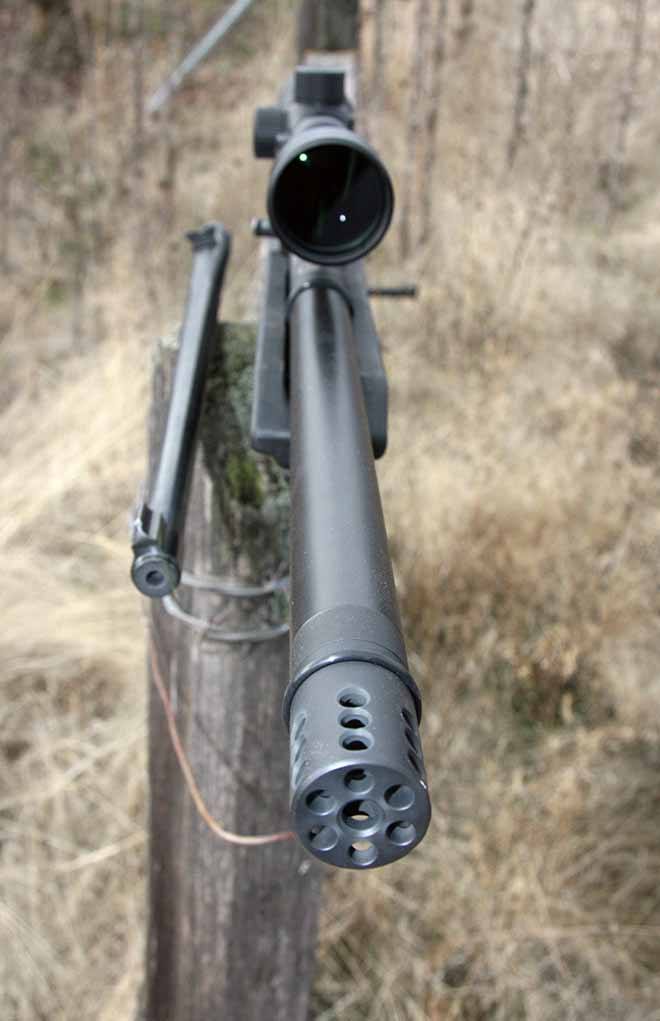
The Archangel’s allure comes by way of a highly-ergonomic design — including an ambidextrous “gooseneck-style” grip with palm swells — and a click-adjustable length of pull (13½ to 145/8 inches) and comb riser creating perfect eye-to-scope alignment. The stock is constructed of a stout carbon-fiber polymer blend and free floats barrels up to 0.920-inch. The forearm includes an integral Picatinny rail and a slide-on cover. It also includes four integral steel cups accepting ball-lock QD sling swivels (standard sling mounts included) and a grip storage compartment big enough to hold a bore snake. The USA-made stock includes a lifetime warranty.
The deep, flared magazine well will not accept my favored Tactical Solutions TriMag (three factory magazines coupled into a compact triangle configuration) without alteration, and it makes inserting/extracting stubby factory mags troublesome. The stock was obviously designed with extended “banana clips” in mind. The stock also required some quick and simple Dremel-tool touch-ups to accommodate the aftermarket trigger group, and some force was necessary to seat the action fully.
There was a solid accuracy boost here, but admittedly, I expected more after disposing of the superfluous Ruger barrel band. The stock came with a patented barrel tensioner — which I did not install. Some continued experimentation with this part might yield tighter groups down the road.
A Beefy Barrel
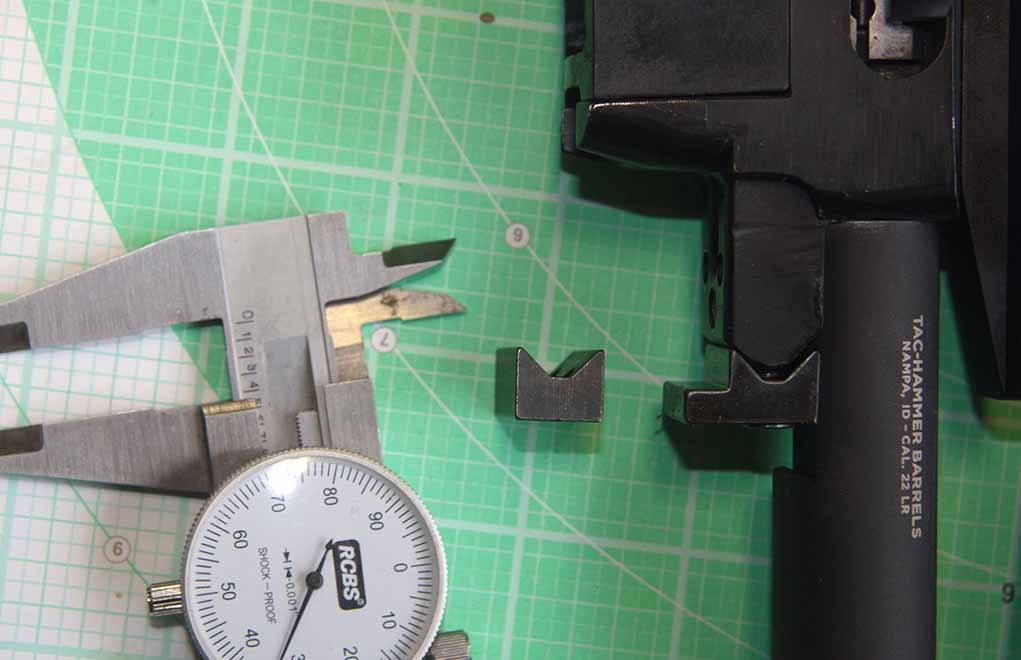
Selecting a barrel was perhaps most agonizing, as many exceptional options in a myriad of weights and lengths are offered. Quick examples come from Tactical Solutions’ (X-Ring threaded, 16.5-inch stainless-steel-lined milled/fluted aluminum, $300), Green Mountain Barrels (20-inch fluted stainless-steel bull, $187.95) and Vorquartsen (16.5-inch, threaded lightweight THM tension barrel, steel barrel/carbon tube, $300). Threaded versions are offered for those wanting to add suppressors or compensators.
Ultimately, I chose Adaptive Tactical’s Tac-Hammer precision barrel with compensator. They include Rigid Core, post-tension construction … delivering bull-barrel benefits while weighing 40 percent less. A stepped, 4140 Chromoly-steel barrel (1:16-inch twist, Bentz chamber) is held inside a 6061-aluminum, 0.920-inch-diameter shroud — the combination providing excellent balance.
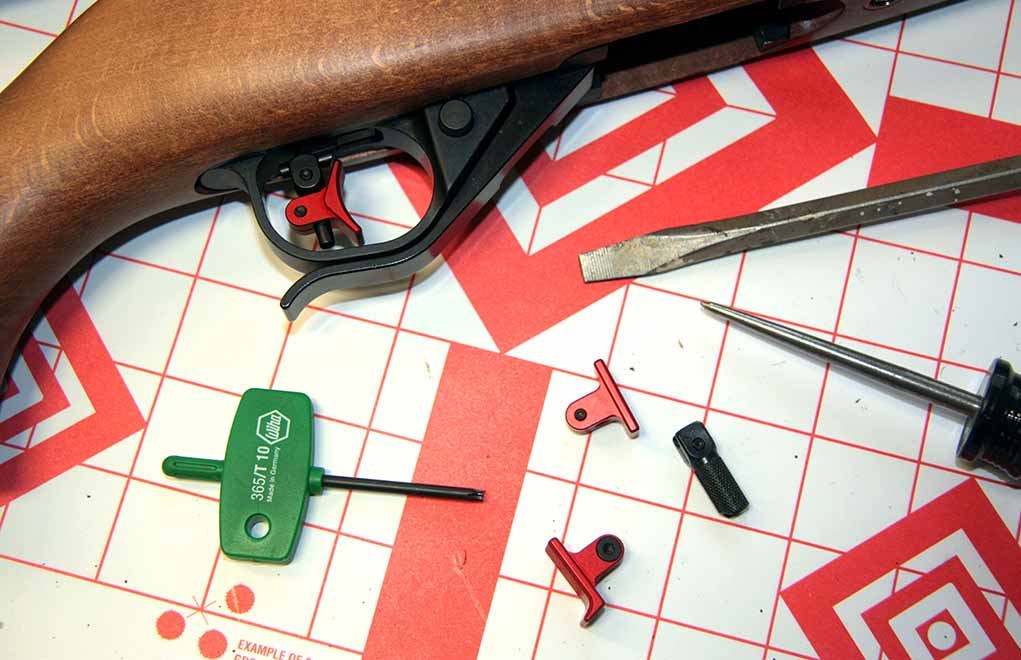
The barrel is tapped into solid steel to accept AdTac’s cantilevered rail (a reliability improvement over Ruger’s aluminum receiver taps). The barrel is threaded (½:28) to accept a suppressor, though it’s currently holding AdTac’s 6061 aluminum compensator. The tube is 16 inches long without compensator, 17.25 inches with. The works include a durable Cerakote finish.
All in, the instillation time required took maybe 20 minutes: removing the original action from the stock, removing two Allen screws and barrel V-block, swapping barrels (the Tac-Hammer proved an extra-tight fit) and returning the block and retaining screws. The barrel self-aligns and automatically head-spaces, resulting in a detectable boost in average accuracy, though this was gained mostly with the hotter hunting loads (American Eagle, Browning BPR and CCI Stinger), which had generally performed poorly from the factory tube. The replacement tube resulted in lower gains with the lighter loads, and the Tac-Hammer barrel was also slower to warm during shot strings.
The Recoil Lug
Little Crow Gunworks’ GRX recoil lug is promised to eliminate fliers and improve overall accuracy by 15 to 20 percent — the only such product I’m currently aware of. It accomplishes this by concentrating recoil energy into the front portion of the action instead of the rear alone.
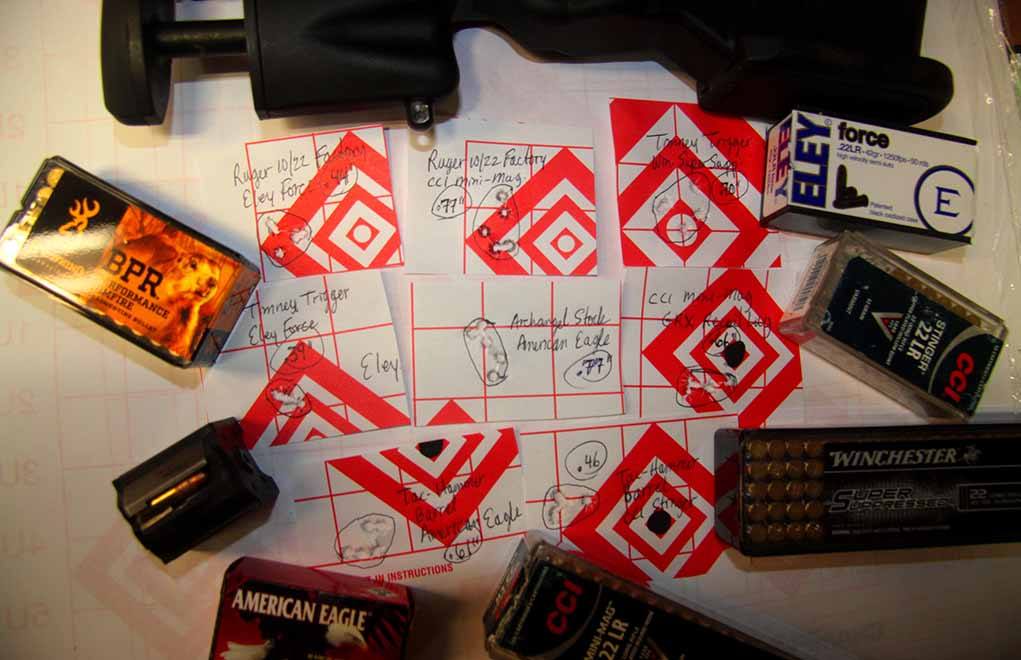
The GRX replaces the factory barrel-retainer V-block, and it includes a bottom recoil-lug extension. This is the most involved portion of this build, requiring cutting a recess into the stock, applying a release agent to the action, lining the created recess with epoxy (I mixed in powdered fiberglass), anchoring the action and allowing it to cure. You could hand this task off to your gunsmith in exchange for $100-$125, but by following the company’s straightforward YouTube instructions, it’s less daunting than it sounds.
Installing the GRX and necessary stock work didn’t change the rifle’s former zero, indicating I didn’t alter the action/stock dynamics. Honestly, after the accuracy gains experienced to this point, I was dubious groups could be shrunk much further. Yet accuracy gains were the most significant of this build, or near the promised 15-20 percent, making the stock alteration worth the effort.
Final Thoughts
If a tack-driving 10/22 is something that sounds appealing, the effort put into this build certainly proved worthwhile. Adding about $765 to a $150 used rifle (not including optics and bases), plus a couple hours of enjoyable labor, created a 10/22 capable of shooting a wide variety of .22 LR ammunition into less than ¾-inch groups. This is the most accurate 10/22 I have ever shot. And yes, the rifle looks pretty impressive, too!
Accuracy Results Per Upgraded Component

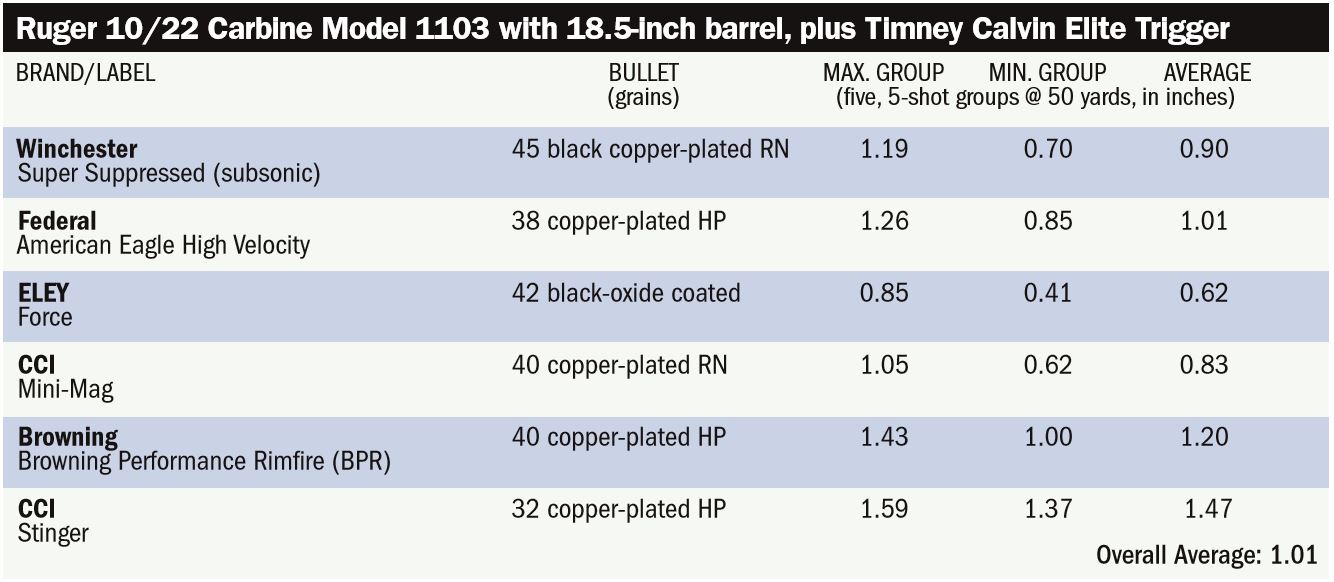
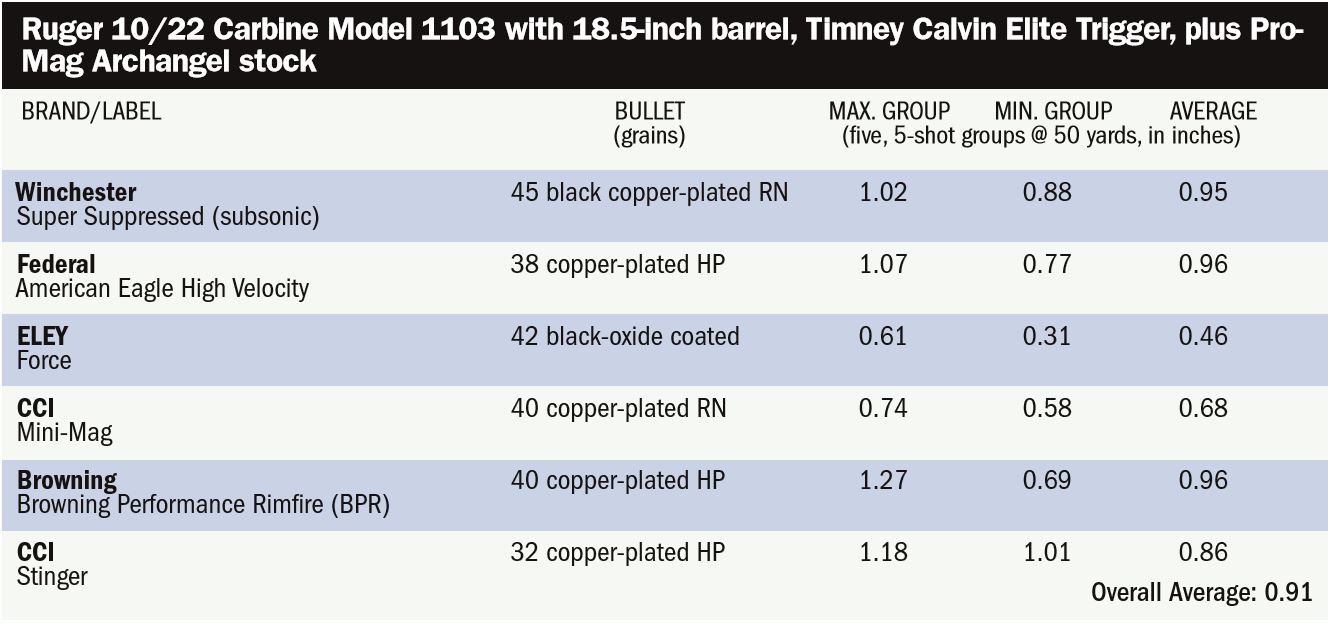
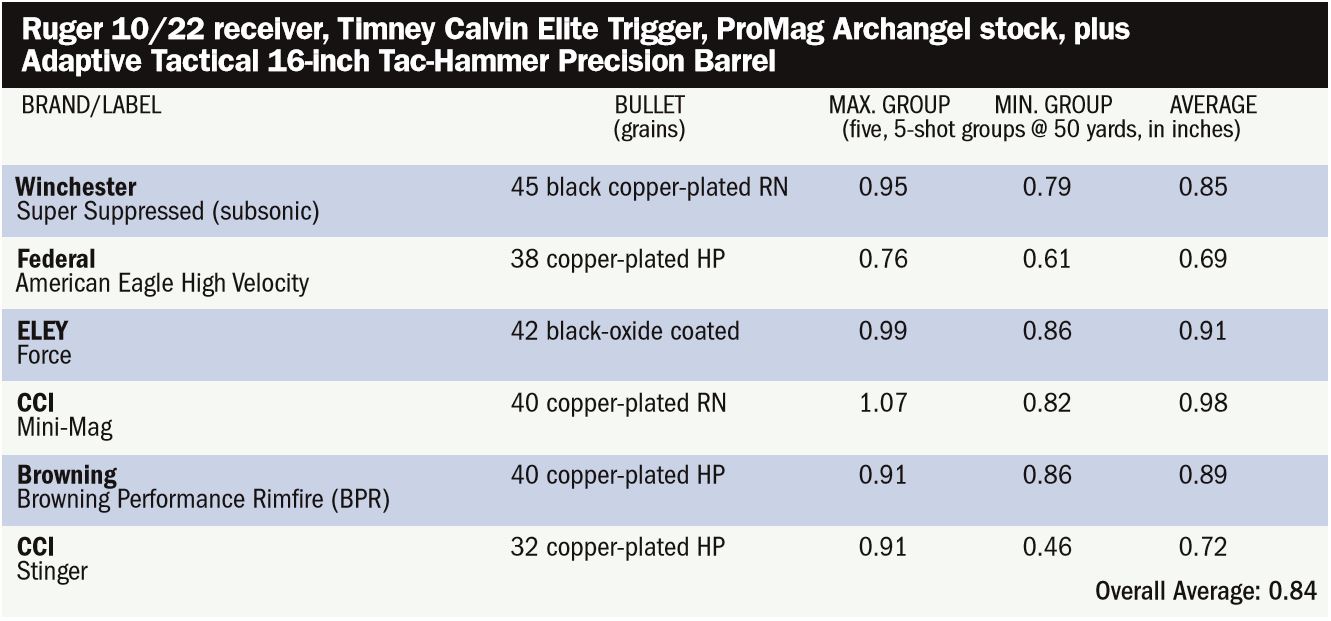
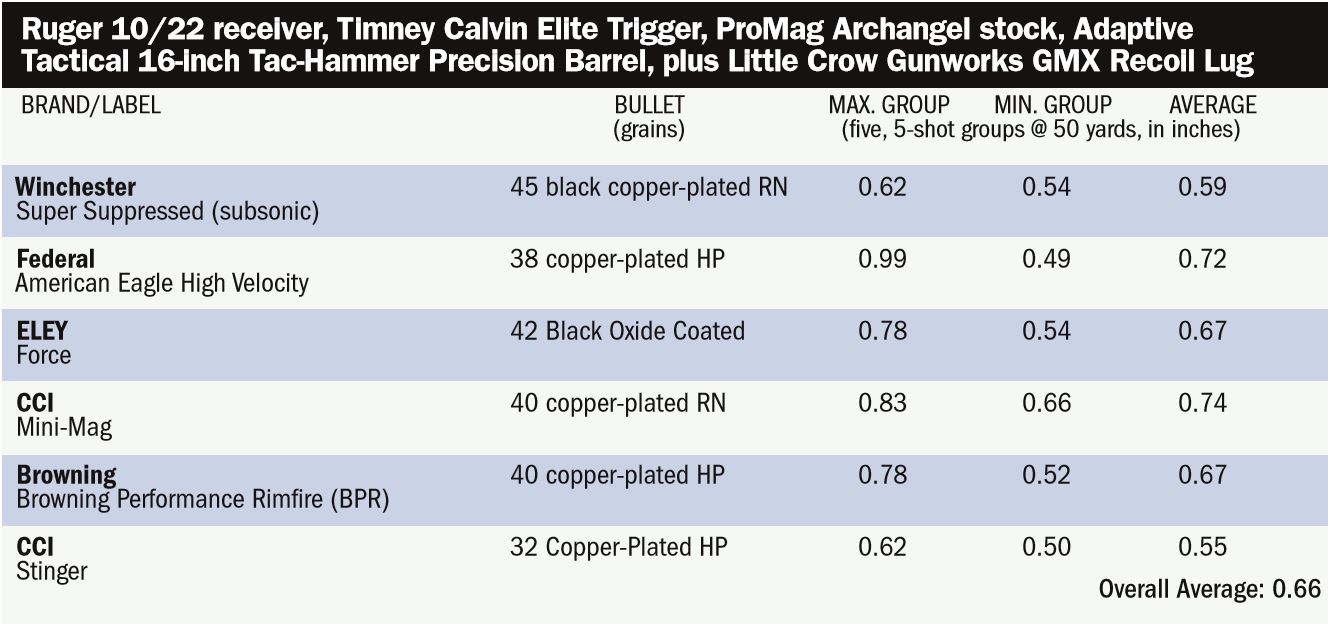
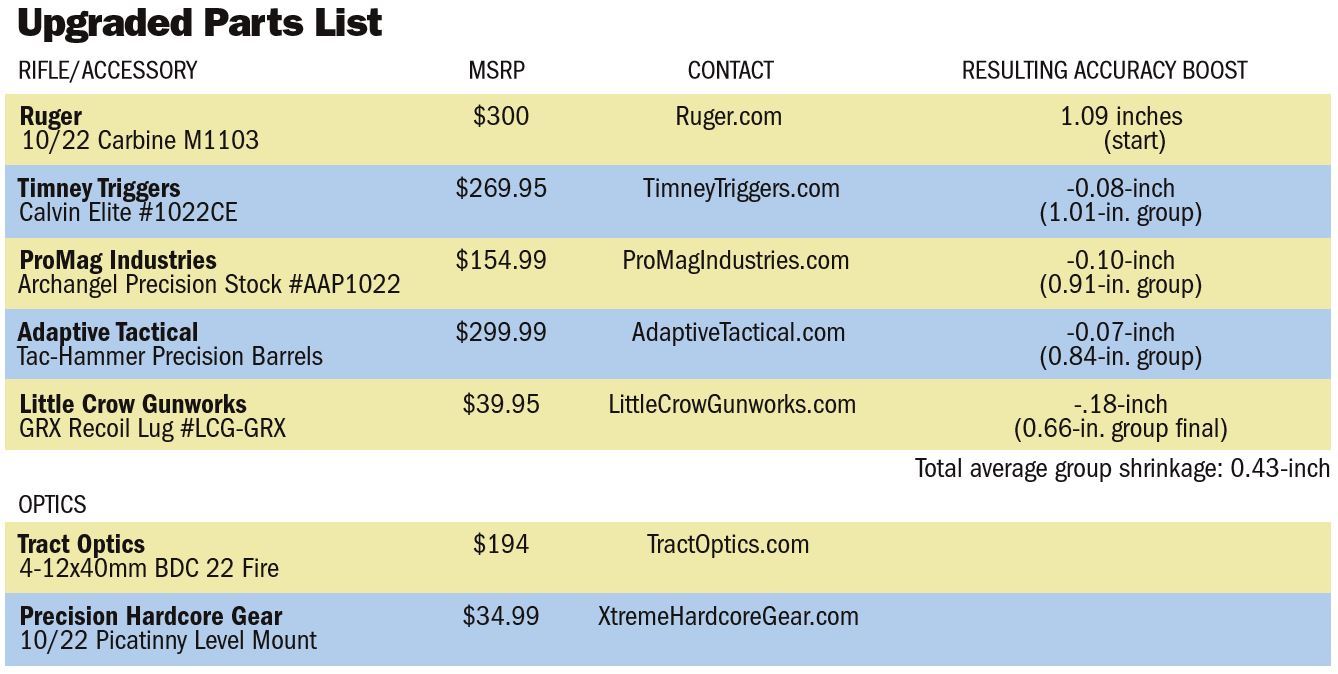
Editor's Note: This article originally appeared in the February 2019 issue of Gun Digest the Magazine.
Get More Ruger Info:
- Great Ruger Guns
- Ruger No. 1
- Ruger Precision Rifle
- Ruger Redhawk
- Ruger Super Redhawk
- Ruger Blackhawk
- Ruger Single Six
- Ruger LCR
- Ruger LCRx
- Ruger 77/22
- Ruger 77/44
- Ruger SR1911
- Ruger Hawkeye
- Ruger Mark IV
- Ruger SR-556
- Ruger LCP II
- Ruger American Magnum
- Ruger American Rifle
- Ruger Gunsite Scout Rifle
- Ruger SR-762
- Ruger Red Label
- Ruger SR40
- Ruger Single Nine
- Ruger P345

Next Step: Get your FREE Printable Target Pack
Enhance your shooting precision with our 62 MOA Targets, perfect for rifles and handguns. Crafted in collaboration with Storm Tactical for accuracy and versatility.
Subscribe to the Gun Digest email newsletter and get your downloadable target pack sent straight to your inbox. Stay updated with the latest firearms info in the industry.

![Best Concealed Carry Guns In 2025 [Field Tested] Wilson Combat EDC X9S 1](https://gundigest.com/wp-content/uploads/Wilson-Combat-EDC-X9S-1-324x160.jpg)


![Best 9mm Carbine: Affordable PCCs [Tested] Ruger Carbine Shooting](https://gundigest.com/wp-content/uploads/Ruger-Carbine-Shooting-100x70.jpg)
![Best AR-15: Top Options Available Today [Field Tested] Harrington and Richardson PSA XM177E2 feature](https://gundigest.com/wp-content/uploads/Harrington-and-Richardson-PSA-XM177E2-feature-100x70.jpg)

Why the need to acccuritize? I have a 35 year old 10/22 with a laminated stock in stainless steel and 4x scope that puts one on top of the last one repeatedly at 30 yards.
The Little Crow Gunworks’ GRX recoil lug seems interesting. Unfortunately there is not a like to the Utube in the article or their website. After searching online for they’ve set it up to difficult to sign in on utube. Thus I’ll never buy a dxx thing from them nor read any articles from you again.
Loved your tale of 10/22 upgrades and I’ll be doing some of them. Wish you would have spent more time on the GRX recoil lug and less time on the ammo. I could build the same exact rifle as you did and get different ammo results in my location. As for phsstpok, half the fun is improving the platform.
Loved your tale of 10/22 upgrades and I’ll be doing some of them. Wish you would have spent more time on the GRX recoil lug and less time on the ammo. I could build the same exact rifle as you did and get different ammo results in my location. As for phsstpok, half the fun is improving the platform.